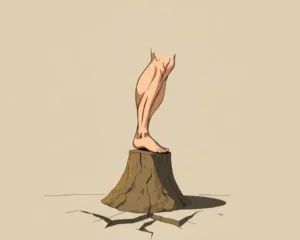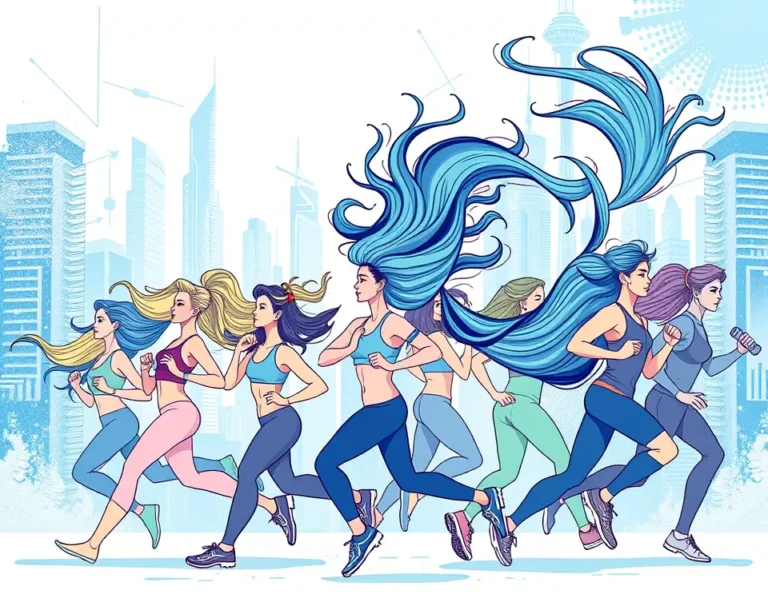As the winter of 2025 tightens its grip, many are grappling with the common woes of dry, brittle, and lackluster hair. The combination of cold outdoor air and dry indoor heating can wreak havoc on your hair, stripping it of its natural moisture and leaving it vulnerable to damage. While a good hair care routine is essential, an often-overlooked factor in maintaining vibrant hair is your fitness routine. Embracing a balanced approach to exercise can significantly improve your hair health, promoting growth, strength, and shine even in the harshest winter months.
The Surprising Link Between Exercise and Hair Health
The connection between exercise and hair health might not be immediately obvious, but regular physical activity plays a vital role in maintaining overall well-being, including the health of your hair.
Enhanced Blood Circulation
Exercise boosts blood circulation throughout the body, including the scalp. This increased blood flow delivers essential nutrients and oxygen to the hair follicles, which are crucial for hair growth and maintenance. A steady supply of nutrients ensures that hair follicles are nourished, leading to stronger and healthier hair.
Stress Reduction
Stress is a significant contributor to hair loss. Exercise is a well-known stress reliever, helping to lower cortisol levels, a hormone linked to hair thinning. By incorporating regular physical activity into your routine, you can mitigate the negative effects of stress on your hair, creating a more favorable environment for growth.
Hormone Regulation
Certain types of exercise, particularly strength training, can help regulate hormones that affect hair growth. Maintaining a hormonal balance is essential for preventing hair loss and promoting healthy hair development.
Top Exercises for Hair Growth and Strength
Not all exercises are created equal when it comes to promoting hair health. Certain types of physical activity are particularly beneficial for stimulating hair growth and strengthening your locks.
Cardiovascular Exercises
Cardio exercises like running, cycling, swimming, and brisk walking are excellent for improving blood circulation to the scalp. These activities elevate your heart rate, promoting blood flow and delivering more oxygen and essential nutrients to the hair follicles.
- Running: A simple and effective cardio exercise that increases blood circulation and reduces stress.
- Cycling: Another great cardio option that improves blood flow without causing excessive sweating.
- Swimming: Excellent for cardiovascular health and general well-being. However, be sure to wash chlorine from your hair immediately after swimming.
- Brisk Walking: A low-impact exercise that’s easy on your body and hair, while still providing a boost to circulation.
Strength Training
Strength training exercises, such as lifting weights or using resistance bands, can indirectly contribute to healthy hair growth by aiding in muscle development and hormone regulation. Strength training can also assist in lowering stress levels, which benefits hair health.
- Squats: Improve blood flow and strengthen the lower body.
- Lunges: Enhance circulation and promote balance.
- Weightlifting: Helps regulate hormones and build overall strength.
However, it’s crucial to maintain a balance, as excessive weightlifting, especially when combined with certain supplements, might lead to increased hair shedding in some individuals.
Yoga and Meditation
Stress can significantly impact hair health, and yoga and meditation are excellent practices for reducing stress levels. Certain yoga poses, such as the downward dog, camel pose, and headstand, encourage blood flow to the scalp, nourishing the hair follicles and promoting hair growth.
- Downward Dog: Increases blood flow to the scalp.
- Camel Pose: Stimulates circulation and reduces stress.
- Headstand: Promotes blood flow to the scalp and calms the mind.
- Breathing Exercises: Reduces stress and promotes relaxation.
Scalp Massage
While not a traditional exercise, scalp massages are a simple yet effective way to stimulate hair follicles and promote hair growth. Massaging your scalp with your fingertips or a scalp massager increases blood flow to the area, delivering essential nutrients and oxygen to the hair roots.
- Oil Massage: Incorporate nourishing oils like coconut or argan oil for added hydration and benefits.
- Gentle Pressure: Apply gentle pressure with your fingertips, moving in circular motions.
- Regular Practice: Perform scalp massages regularly, even daily, for optimal results.
Side-to-Side Hops
Side-to-side hops can improve hair regrowth by enhancing blood circulation and promoting scalp health. The rhythmic movement stimulates blood vessels, ensuring that hair follicles receive more oxygen and nutrients.
What to Avoid
Certain types of exercise or practices related to exercise can negatively impact your hair health.
Overly Strenuous Exercise
Overly strenuous activities like high-intensity interval training (HIIT) and heavy weightlifting can raise cortisol levels, potentially leading to increased hair loss, especially in men.
Excessive Sweating
Excessive sweating can be detrimental to your hair. The salt in sweat can accumulate on your scalp, potentially damaging your hair over time. It is important to wash your hair or rinse your scalp after intense workouts to remove sweat and prevent damage.
Winter-Specific Hair Care Tips to Complement Your Fitness Routine
During the winter months, it’s essential to take extra steps to protect your hair from the harsh elements.
Hydration is Key
The dry winter air can sap moisture from your hair, making it brittle and prone to breakage. To counteract this, incorporate nourishing shampoos and conditioners into your routine that contain hydrating ingredients such as natural oils or butter. Using a leave-in conditioner can replenish moisture and protect from the effects of hot styling tools, indoor heating, and cold winter winds.
Limit Heat Styling
Heat styling tools such as blow dryers, straighteners, and curling irons can exacerbate dryness during the winter months. To protect your locks, try to limit the use of heat styling tools whenever possible. When using hot styling tools, protect your hair with a heat protectant spray.
Oil Treatments
Restore moisture with an oil-based hair treatment. Choose a lightweight, leave-in formula with argan oil to instantly revitalize dry, damaged hair. You can also apply a nourishing oil to the ends daily to help replenish moisture and protect your hair. Massaging your scalp with nourishing oils like coconut or argan oil also stimulates blood circulation in the scalp, promoting healthier hair growth and improving overall hair texture.
Protect Your Hair from the Elements
Cold, wet winter weather can take its toll on your hair. Protect your hair from the elements by wearing a hat or scarf when you go outside.
Trim Regularly
Regular trims are crucial to keeping your hair looking fresh and preventing split ends. Trimming the ends every 6-8 weeks helps to promote healthy growth by preventing damage from traveling up the hair shaft.
Nutrition: Fueling Your Fitness and Your Follicles
Exercise often encourages better eating habits, which is fantastic news for your hair. A balanced diet rich in proteins, vitamins, and minerals is crucial for hair health.
Essential Nutrients for Hair Health
- Protein: Hair is primarily made of protein, so ensure you’re consuming enough through lean meats, fish, eggs, and soy products.
- Iron: Iron-rich foods like leafy greens, lentils, and fortified cereals help prevent hair loss.
- Biotin: Biotin-rich foods like eggs and nuts are known as the hair growth vitamin and help prevent hair loss and promote hair strength.
- Omega-3 Fatty Acids: Found in fish and flaxseeds, these healthy fats nourish the scalp and promote hair growth.
- Vitamins A, C, D, and E: These vitamins play a crucial role in maintaining healthy hair, skin, and nails.
- Zinc: Zinc is essential for hair tissue growth and repair.
Foods That Promote Hair Growth
- Eggs: Rich in biotin and protein.
- Berries: Provide antioxidants that protect hair follicles.
- Spinach: Packed with iron, vitamins, and minerals.
- Fatty Fish (Salmon): Contains omega-3 fatty acids.
- Nuts and Seeds: Excellent sources of vitamin E, zinc, and healthy fats.
- Sweet Potatoes: Rich in beta-carotene, which the body converts to vitamin A.
- Avocados: Provide healthy fats and vitamin E.
Conclusion
Maintaining healthy hair during the winter months requires a comprehensive approach that combines a well-rounded fitness routine with proper hair care and a nutritious diet. By incorporating the exercises and tips outlined above, you can combat the damaging effects of winter and promote stronger, healthier, and more vibrant hair in 2025. Remember to listen to your body, adjust your routine as needed, and consult with a healthcare professional or hair care specialist if you have any concerns about hair loss or scalp health.







